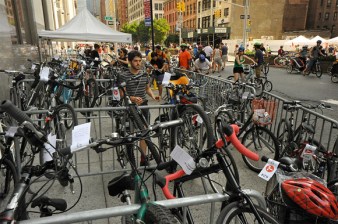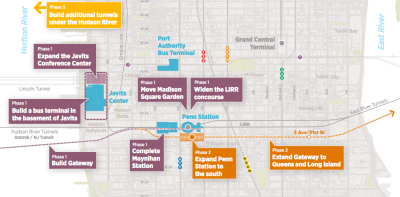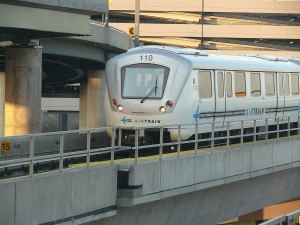Build A Brighter, Greener Future at the New Port Authority Bus Terminal: RPA
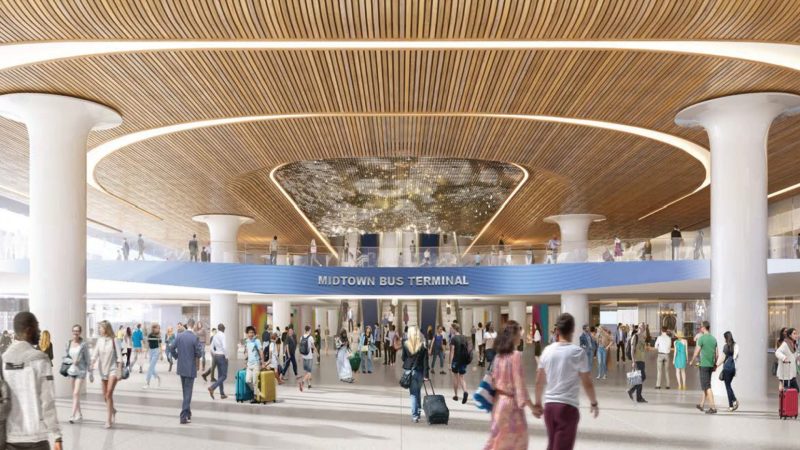
Don’t miss the bus on good design.
The words “Port Authority bus terminal” currently cause an involuntary shudder in most human beings, so with the agency embarking on a decade-long, multi-billion dollar project to rebuild its notorious terminal into a much more welcoming place for the more than 250,000 bus riders who used to transportation hub before the pandemic, the Regional Plan Association hopes to encourage the authority to emphasize green space and integrating the bus station into the surrounding Manhattan neighborhood.
Per the RPA’s recommendations, making a better bus terminal in Midtown starts with considering the new space as a “civic destination,” the kind of place that people actually want to go to instead of trudge into and out of with broken spirits.
It should be “a signature place that a city can be proud of,” said RPA Vice-President of Housing and Urban Planning Moses Gates. “Somewhere where if you’re a commuter, it’s a place that you don’t mind sticking around in as opposed to trying to hustle out of at the earliest possible moment. A place where if you’re a resident of the neighborhood, you think, ‘Oh, I’ll go in here,’ as opposed to ‘Oh, better avoid that.'”
Gates specifically pointed to Grand Central Terminal as a prime example of what the Port Authority should be shooting for, a transit destination that doesn’t actively repel either or commuters or neighborhood residents or workers.
With a 10-acre footprint that’s going to stretch from Eighth Avenue almost to 11th Avenue, the Port Authority must treat the roof of the new main terminal and auxiliary storage building as public space to be utilized in a manner that serves the public, RPA says. The roof of the new buildings could be designed as a park, as San Francisco did at its new Transbay Terminal, or another type of green space or public amenity. Gates said the Port Authority must treat the roof as more than just “the ceiling of the highest floor.”
“You’ve got an enormous amount of space in your central business district, so use it,” he said. “Whether that’s programming, whether that’s some kind of green roof, whether it’s some kind of open space or some other idea, what’s important is you’ve got a giant open space that’s publicly owned in the middle of Midtown.”
And inside, beyond just serving as a place for travelers, the Port Authority should add shopping, restaurants and community and recreation spaces. It’s a move that turned the Seoul Express Bus Terminal into a neighborhood hub, and would really hammer home that the bus terminal is not just a bus stop but a point of civic pride.
“We’re all citizens of the city, or we’re commuters who use the city, and we want our city to be nice and our commutes to be enjoyable and for our public authorities to spend money making places that are pleasant to be in,” said Gates. “I think good urban design is a goal in and of itself, especially if it’s right smack dab in a place where millions of people are walking, commuting, going to work and living every day.”
The construction of a new bus terminal should also be seen in the context of the changes coming to the neighborhood as a whole. Midtown is already going through a kind of extreme makeover, with the upcoming Hudson Yards Phase 2, the refurbished Penn Station, whatever new commercial and residential buildings come with the new train hub and additional development that will be built to support the Port Authority’s bus terminal project.
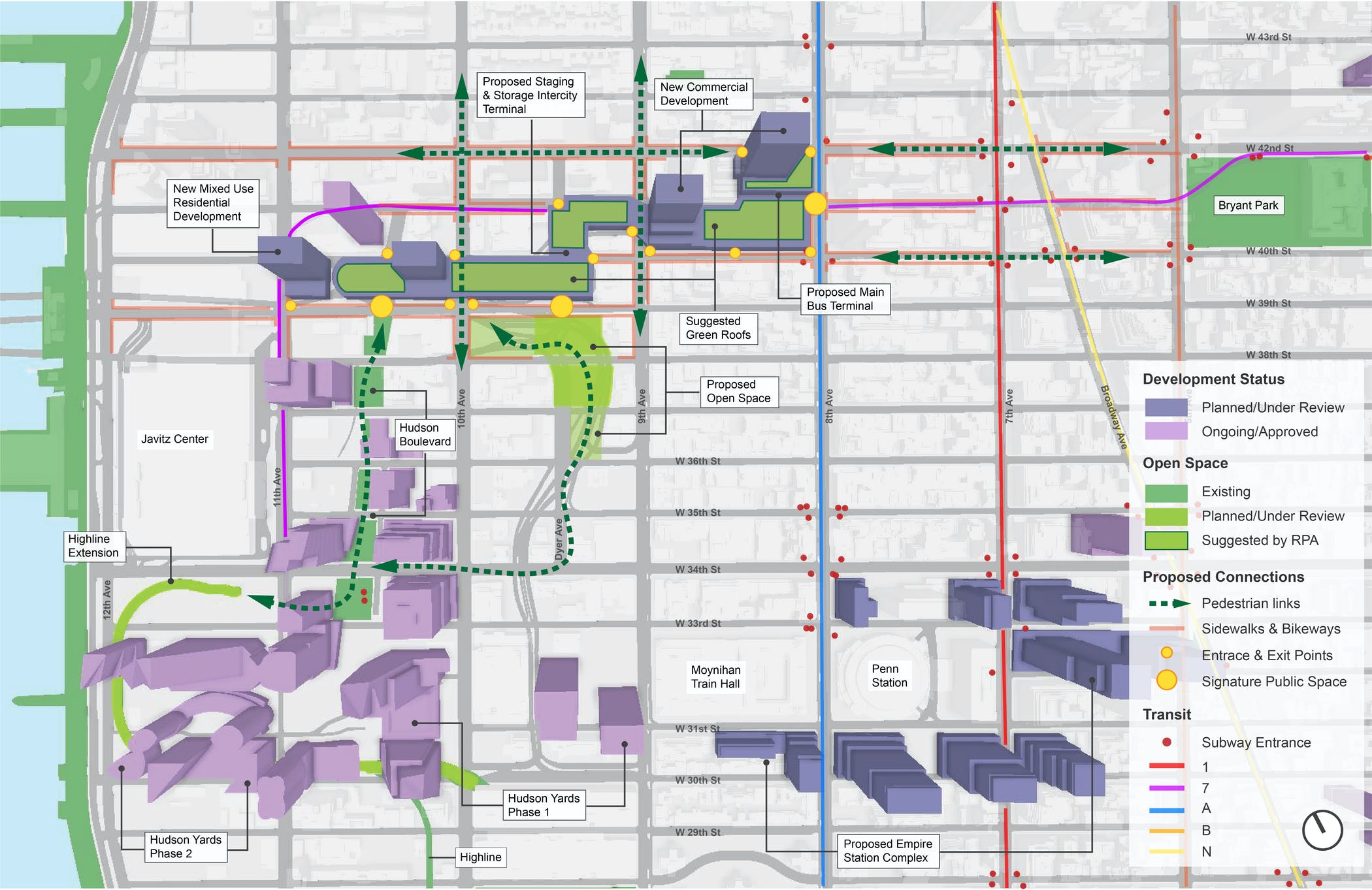
As long as the whole area is being remade, RPA suggests that the city also create a more unified pedestrian experience in order to avoid making residents and commuters feel like they’re walking along the abandoned edge of a highway complex. The project is an opportunity to create a better environment for wheelchair users and other people with mobility impairments. As the report points out, sidewalks around the bus terminal are too often closed because of construction or otherwise rendered basically unusable because of poor design.
“It’s not like we don’t know what to improve this and make things wheelchair accessible,” said Gates. “It’s just a matter of trying to coordinate that with the building of the new terminal, so that there’s a good environment for pedestrians or bicyclists and for wheelchair users expands past the terminal itself to the west side of Manhattan. This is our signature, business, cultural, tourism area of not just New York, but really the country. To not be able to navigate that easily in a wheelchair, that’s not a source of civic pride, that’s really something that that we should kind of be ashamed of.”

The report specifically urges planners to look at a couple of different pedestrian thoroughfares for improvements. Moving east to west, the city and PA should focus on how 40th Street between Bryant Park and the bus terminal works for pedestrians, and on 42nd Street between Bryant Park and the Hudson River Greenway. For north-south pedestrian connections, Ninth and 10th avenues, which pass under the area the bus terminal currently overwhelms with overhead entrance and exit ramps, could use improvements, especially if they take advantage of and connect to the new green space that’s going to be constructed on a decked over piece of Dyer Avenue.
